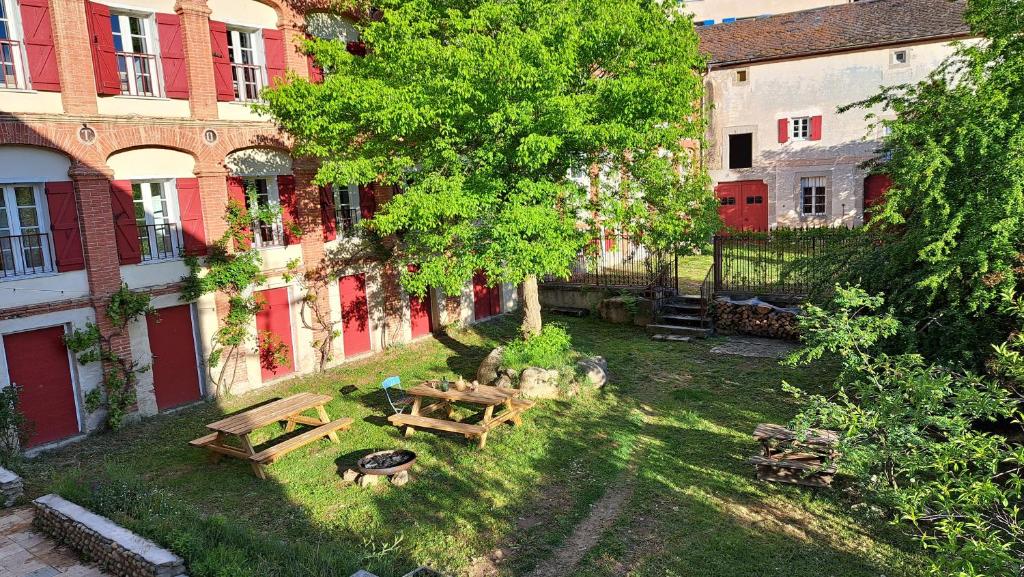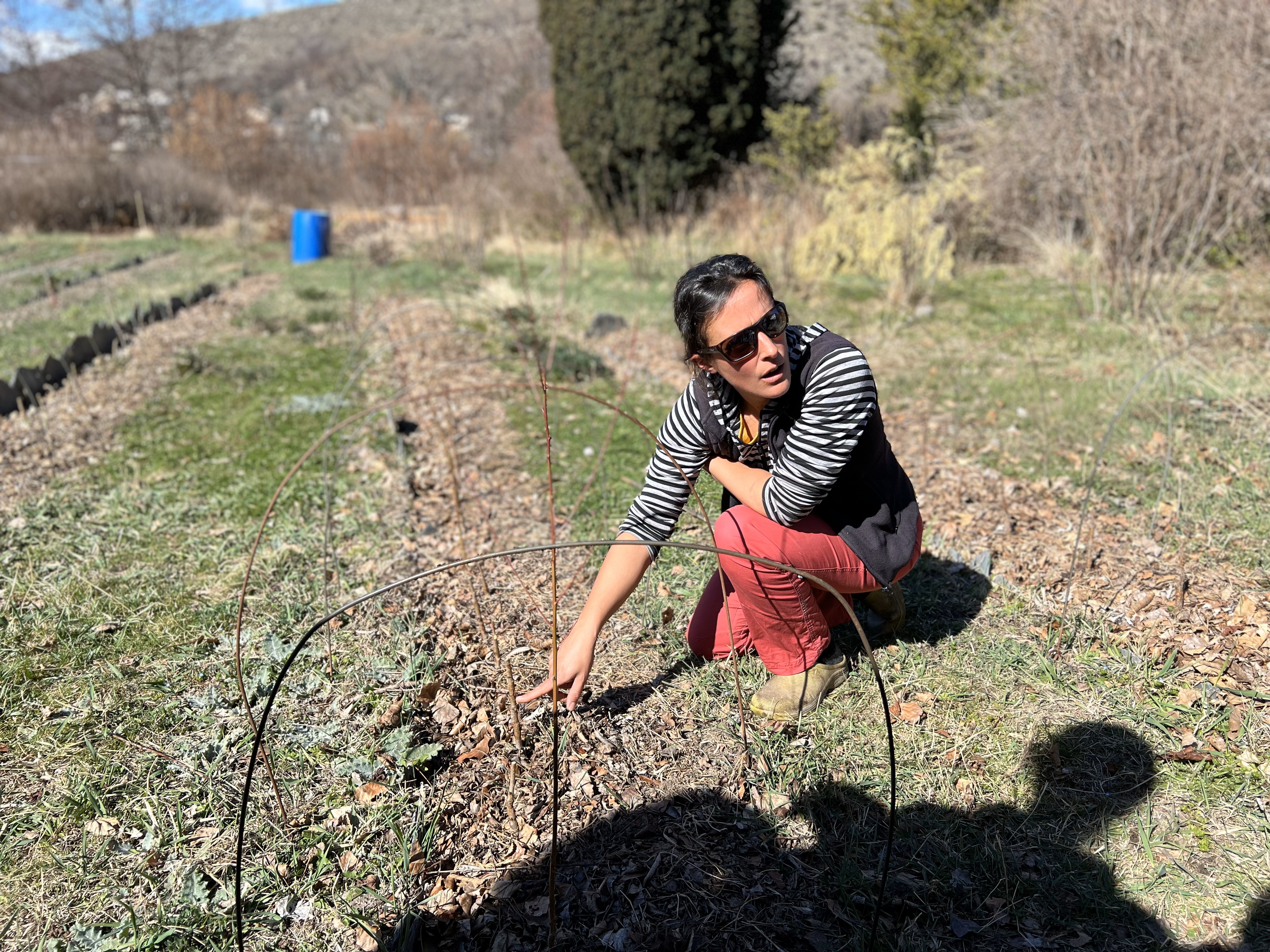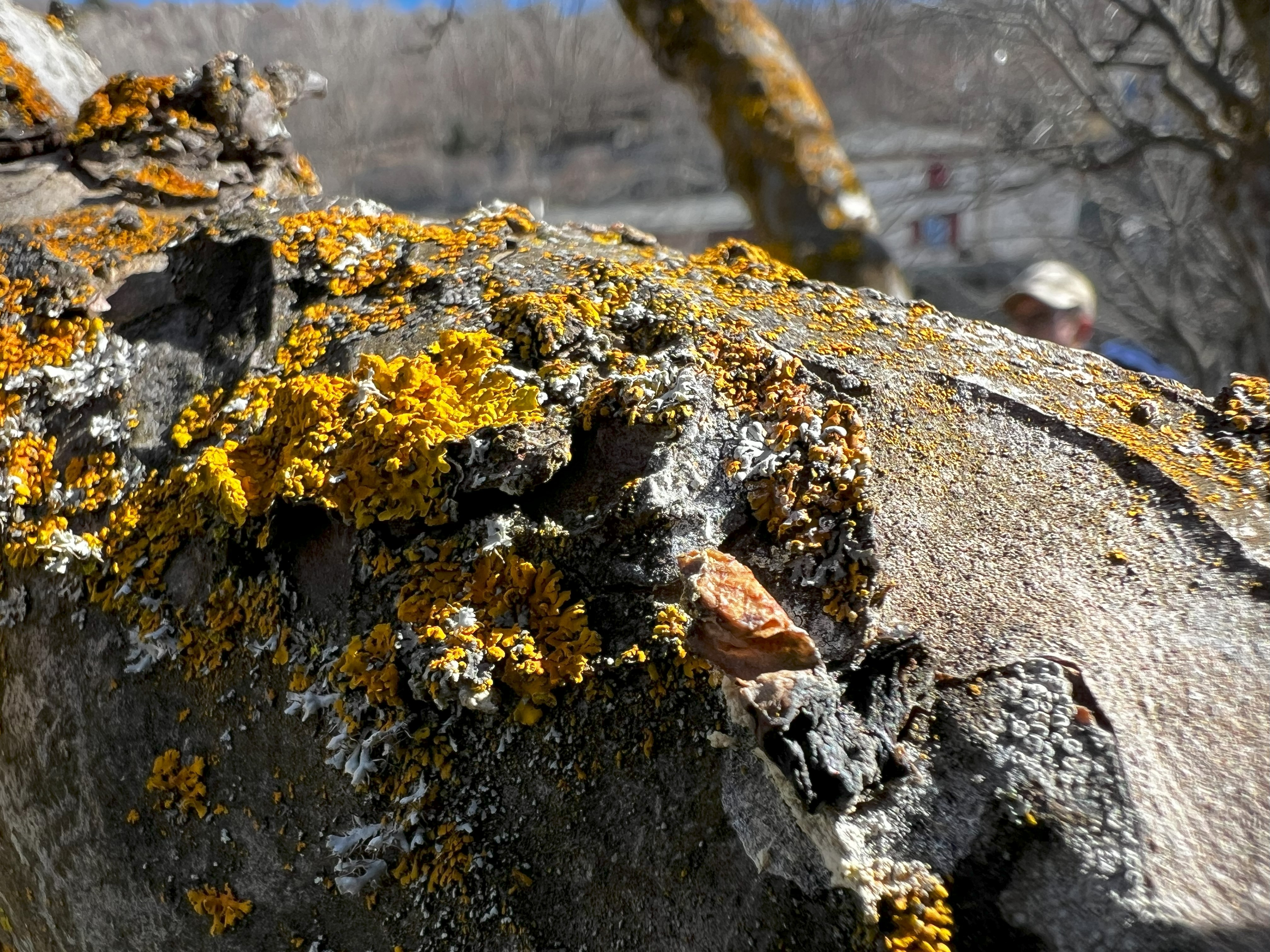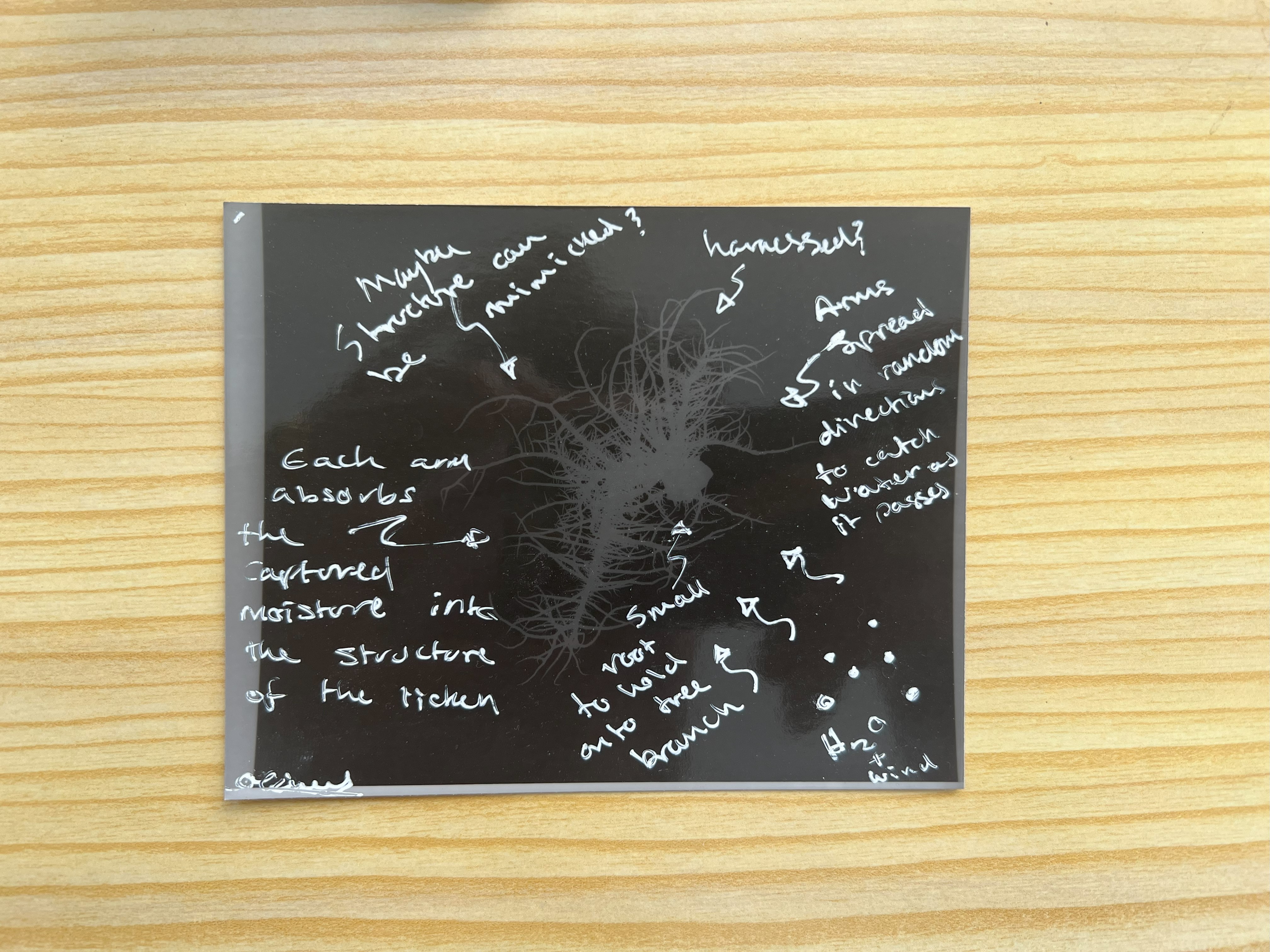Research Trip
Too Long Didn’t Read
This is an account of our research trip to Angoustríne in the French Pyrenees, where I explored a bit of biomimicry, particularly focusing on lichens’ ability to absorb water. I experimented with various mediums, like analogue photography and 3D scanning, to study the mechanisms of lichen. The trip involved workshops on native fruit trees, herbalism, and a hike led by a naturalist. At the end of the trip we concluded our projects with a showcase of our findings.
Where did we go?¶
Our MDEF research trip took us to a tiny town called Angoustríne, nestled in the French Pyrenees, about two and a half hours drive from Barcelona, or about three hours on the train.
We stayed in an old farmhouse called La Grande Maison Rouge, and were hosted by the wonderful Mercè, who lives in the town of Angoustríne with her partner and young son. They’ve been working on turning the house into a haven / retreat for all types of research and experimentation.
What did we do?¶
The days were split into different activities. On the first day we were there, we were introduced to our other research director, Thomas Duggan. Thomas is a designer / artist from the UK and had previously worked with cohorts of MDEF students on their respective research trips.
We were really encouraged to experiment with all sorts of different mediums and technologies that we wouldn’t normally have had the chance to access or use during our regular work. Ranging from analogue photography, pinhole cameras, photosensitive paper, and film to using microscopy and macro lenses for phones to examine the world of the very small close up.
This was a really interesting experience, and I’m glad to I had the chance to explore some of these mediums.
At the start of the trip, I showed up without any idea for what I wanted to research. So I’d planned to just roll with every day and hoped that something would present itself.
I came across what I was investigating by accident, really.
The first day we were there, we had a series of workshops. The first was with a woman called Karina, who was working to reintroduce native fruit trees and species to the valley and surrounding region. It was this blend of traditional landscaping and forestry techniques to increase the health of these little saplings and get a starting fruiting garden going, which was really interesting to experience.
In the afternoon, we had a second workshop from a woman called Anne Marie, whose field of specialism is herbalism and herbal medicine. She taught us all about different kinds of plants, how to recognize which ones you can eat, which ones you can’t, when you can eat them, what seasons and so on and so forth, which was really interesting. I think this was an activity we all really enjoyed as a group.
The following day, we were taken out on a hike through the valley, led by a man called Fred, a naturalist and local who knew everything about the surrounding areas.
It was on this walk that I sort of started to get an idea of maybe what I wanted to look into. I’d come across a particular species of lichen that seemed to hang off of trees with these small wispy tendrils and would seem to collect water from the morning fog and dew before the sun rose up and suck that into its substructure. That seemed, to me at least, as something really interesting to explore.
I’d always been interested in biomimicry and it was something I wanted to explore a bit more in my design work and in my career so I thought this was the perfect chance.
I hadn’t really had much chance to do much of this kind of research while I was in university doing my bachelor’s. So it was quite exciting to be able to sort of be given the space and opportunity on this research trip to really dive into that and not have to really worry about how it could relate to my field of energy for the thesis project.
What was my research focus?¶
I collected a few samples of this lichen and took them back to the house, where I started to do a study of the different mechanisms this lichen used to absorb water.
I used this old form of photography where you place the subject on a slide in a dark room and slide it underneath the camera. You shine a light through the object on the plate onto a piece of photosensitive paper. This turns the paper black, leaving highly detailed outline of your subject. I found this to be a great method for analysing the different tendrils of the lichen and how they worked.
And then using some special lenses that can attach to phones I was able to take some really interesting macro shots of these lichens and how they reacted to water.
The idea I’d had was to explore a potential biopunk future where we work in symbiosis with these creatures and learn from these microalgae and cyanobacterial organisms, mimicking their structure for harvesting water in the mornings out of moisture in the air to create panels that could collect water. These could be placed on buildings or in parks along the sea, and as sea fog rolls in and moisture is carried on the air through these panels they would catch and trap that water and store it for later usage.
I was imagining a world of symbiotic life, where we breed panels of lichen to catch water out of air in drought stricken areas.
I 3D scanned the lichen with a very with a high resolution 3D scanner in an attempt to get myself a little 3D model of it that I could then use to further create different structures in a virtual environment to test out my ideas.
I didn’t get a chance to do that while I was on the research trip but I think that’s something I’d like to continue as a little weekend project maybe to just create some interesting concepts of what that could appear and what that could look like.
So that was a really interesting little three-day long research project that I was doing while I was on the trip. I took some footage and I made a little video about it as a way to document what I was doing and investigate how we could take that a bit further.
Final Showcase¶
At the end of the week we had a little showcase where we showed off our research and projects to everyone else in the class, to some of the teachers who’d come up to check it out and also the people from the village who decided to come and take a look at everything we were doing.
This was a really lovely as we got to interact with them and engage with their community as well, they are a wonderful community of people who are very friendly and welcoming, they seemed really happy to have people engaging in the civic life around their village.
I’m glad I was able to explore a different interest that I feel like I haven’t been able to explore as much on some of the other research projects I’ve done on the masters.
I’m very happy that the research trip was able to to deliver for me and the sense of freedom to explore and experiment with completely random and unrelated objects to design which was something that I really enjoyed.







